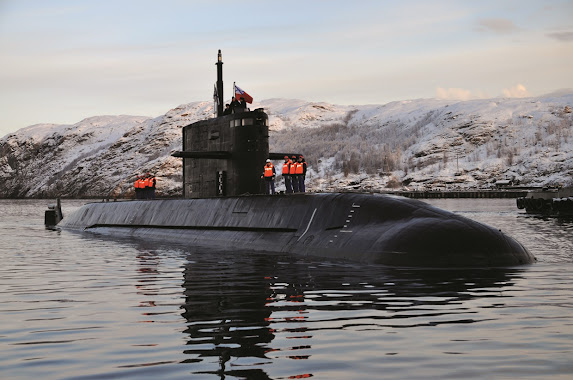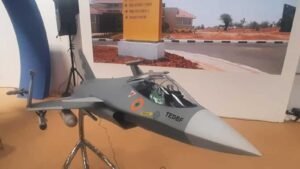Source : Frontier India
 |
| Russia offers Amur-1650 based AIP equipped submarines for Indian Navy’s Project-75I submarine program |
by Joseph P Chacko
India prioritises upgrading its submarine fleet in light of Pakistan’s naval aspirations and China’s increasingly assertive presence in the Indian Ocean and near the Strait of Malacca. Eleven of India’s sixteen conventional submarines are over 20 years old, and procedures must be revised to replace the ageing fleet. The Indian Navy’s submarine fleet, consisting of four HDW Type-209 [of German design and partially Indian manufacture] and seven Sindhughosh class submarines [of Russian design], is somewhat dated, despite the contribution from Scorpène class submarines of French Design. It has also returned the nuclear attack submarine [SSN] INS Chakra that it had leased to Russia for ten years.
Given these circumstances, New Delhi must also consider how it will be able to keep up with the expansion of the oceanic component of its deterrence, which are based on two nuclear ballistic missile submarines (SSBN), specifically the INS Arihant and INS Arighat [whose entry to service is anticipated this year].
Many decades ago, the Indian Navy kicked off the 75i project in order to expand its submarine fleet by six vessels. In general, the Indian Navy seeks larger subs than the Scorpene, capable of carrying cruise and anti-ship missiles and outfitted with an anaerobic propulsion system [AIP] to boost their autonomy in diving, an awful decision.
Practically every manufacturer expected to supply such submarines withdrew from consideration for this proposal request. They at least pretended to, anyway. As a result, the Japanese Kawasaki Heavy Industries and Mitsubishi Heavy Industries [Soryu class] and the Swedish Kockums [A26] announced that they would pass their turn, together with the Russian Rubin, which cited “technical reasons,” Naval Group, which had suggested a variation of its Shortfin Barracuda, and others.
The German ThyssenKrupp Marine Systems [TKMS] had already said that it was giving up after submitting the candidature of its Type 214 submarine, claiming “disagreements” on specific technical articles of the procedure— especially in regards to workloads, liabilities, and technology transfers.
But TKMS is now clearly back in the race, with only the Spanish Navantia and the South Korean Daewoo Shipbuilding and Marine Engineering [DSME] left.
The German Chancellor Olaf Scholz is scheduled to visit India on February 25 and 26. One of the tasks of his visit would be to sign an agreement between the two governments for the collaborative building of six submarines. This is the assurance given by four officials from the Reuters news agency, including two Indians and two Germans close to the case.
The Indian Ministry of Defence source claimed Navantia’s offer was turned down upfront. Hence, TKMS and DSME would continue to compete. Chancellor Scholz was determined to rekindle commerce and defence relations, an Indian diplomatic representative said.
This is true even if it entails enabling technology transfers, especially regarding the AIP system, on which the Indian Defence Research and Development Organization (DRDO) is now working, and even if it necessitates India to produce all submarines.
According to Reuters, Berlin has loosened its restrictions on transferring military hardware to India.
Given that the Type 214 submarine is scarcely larger than the Scorpene and cannot carry cruise missiles, it is uncertain whether it will fit the requirements of the Indian Navy. It is expected that TKMS may propose Type 216, which is an evolution of Type 214 and was designed for the Australian contract that the Naval Group won in 2016 with the Shortfin Barracuda.
Russian Offer
As the Indian Navy now huddles to iron out its unfortunate Request for Proposal, Russia has offered to work together on the design and production of non-nuclear versions of submarines of this sort, which would be based on the Russian Amur-1650 concept. The level of localisation of manufacturing in the programme execution based on the Russian platform Amur-1650 can be increased to 70 to 80 per cent if one considers Russia’s experience working with India on past naval projects.
The Russian plan has been reformulated to include design aspects and a larger indigenisation percentage, which New Delhi will examine closely.
Nevertheless, if one recalls correctly, the primary goal of the P-75i project was to acquire the Russian submarine. India was to design and construct a submarine in the future using the best of Western (P-75) and Eastern technologies (P-75i).
This matches New Delhi’s plan, which is to move beyond a hierarchical buyer-seller relationship and towards a co-development and co-production model.
Even DSME may find it difficult to provide India with design experience, and DSME submarines are versions of HDW designs and so technically not of an eastern design.
Joseph P Chacko is the publisher of Frontier India, Flicks Town and D2Mobi. He holds an M.B.A in International Business





